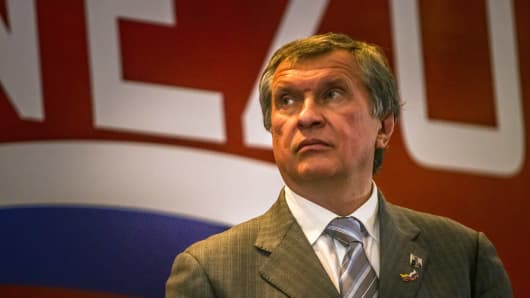 Record-low oil prices,
international sanctions and an expensive interventionist foreign policy
— can things get any worse for the Russian economy? The answer varies
according to which Russian captain of industry you speak.
Record-low oil prices,
international sanctions and an expensive interventionist foreign policy
— can things get any worse for the Russian economy? The answer varies
according to which Russian captain of industry you speak. The World Bank sees Russia's economy shrinking by a steep 3.8 percent this year. A sharp contraction in real wages of 8.5 percent in the first half of 2015 has led to a rise in an already-high poverty rate and a tumble in consumer demand.
However, the billionaire president of Russia's Rusal, the world's second largest producer of aluminum, thinks the worst is yet to come — although not for at least another three quarters.
"There is still a crisis and we can't see the bottom yet and there are a lot of issues that need to be resolved… I don't think in the next nine months we will see the bottom yet," Oleg Deripaska told CNBC on Wednesday.
He pointed to plethora of issues
that needed to be
resolved before the economy would see any improvement, including the volatility in commodity markets, an overreliance on state enterprises and government intervention and the inefficiency of the Russian debt markets and overall financial system.
In addition, Deripaska said there were "a few conflicts which need to resolve" — potentially a reference to Russia's bombing campaign in Syria and activity by pro-Russian militants in Ukraine that are believed to be backed by Moscow.
However, Alexei Yakovitsky, chief executive of VTB Capital — part of VTB, Russia's second-largest bank by assets — told CNBC this week that Russia's economy was at, or near to, its nadir.
"Obviously, Russia's economy has been going through a fairly tough adjustment, largely driven by external shocks. I'd say we're either at the bottom or pretty close to it. I think we're starting to see the early signs of things turning the corner — the economy is adjusting fairly quickly," he said.
resolved before the economy would see any improvement, including the volatility in commodity markets, an overreliance on state enterprises and government intervention and the inefficiency of the Russian debt markets and overall financial system.
In addition, Deripaska said there were "a few conflicts which need to resolve" — potentially a reference to Russia's bombing campaign in Syria and activity by pro-Russian militants in Ukraine that are believed to be backed by Moscow.
However, Alexei Yakovitsky, chief executive of VTB Capital — part of VTB, Russia's second-largest bank by assets — told CNBC this week that Russia's economy was at, or near to, its nadir.
"Obviously, Russia's economy has been going through a fairly tough adjustment, largely driven by external shocks. I'd say we're either at the bottom or pretty close to it. I think we're starting to see the early signs of things turning the corner — the economy is adjusting fairly quickly," he said.
Yakovitsky forecast a "marginally positive result" in
terms of GDP next year, in common with the World Bank, which sees the
Russian economy expanding in 2016 by 0.7 percent
"This will be driven by import substitution, by the impact of the weak ruble and just the latest statistics show a reversal of capital flight with capital coming back in, which is also an early positive sign," he told CNBC.
This month, Russia reported its first quarterly net capital inflow in over five years, with $5.3 billion flowing into the country between July and September, according to preliminary central bank data.
However, any ongoing recovery in capital flows will be capped by the sanctions imposed by the West on Russia following its incursion in Ukraine, which has limited the access of Russian companies and banks to international financial markets.
"It may happen that sanctions will never be lifted, but we would still be able to live. Russia would not die. The issue is how we can adapt and adjust our system and what we can do to stimulate the growth and the recovery," concluded Deripaska.
"This will be driven by import substitution, by the impact of the weak ruble and just the latest statistics show a reversal of capital flight with capital coming back in, which is also an early positive sign," he told CNBC.
This month, Russia reported its first quarterly net capital inflow in over five years, with $5.3 billion flowing into the country between July and September, according to preliminary central bank data.
However, any ongoing recovery in capital flows will be capped by the sanctions imposed by the West on Russia following its incursion in Ukraine, which has limited the access of Russian companies and banks to international financial markets.
"It may happen that sanctions will never be lifted, but we would still be able to live. Russia would not die. The issue is how we can adapt and adjust our system and what we can do to stimulate the growth and the recovery," concluded Deripaska.
"The change reflects our expectations of a more prolonged weakness in domestic demand due to lower — and more volatile — oil prices, and tighter fiscal and monetary policies through end-2016, compared with our previous assumptions," S&P senior economist, Tatiana Lysenko, said in a report.
S&P also cut its growth forecast for 2016 to 0.3 percent from 1.9 percent.
"We now anticipate a weakness in private consumption to extend into 2016, and an only marginal recovery in capital spending next year, helped by improved corporate profit margins and a slowdown in deleveraging," Lysenko said.

No comments:
Post a Comment